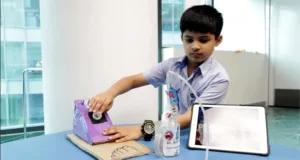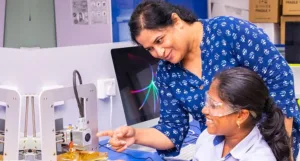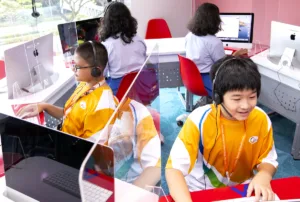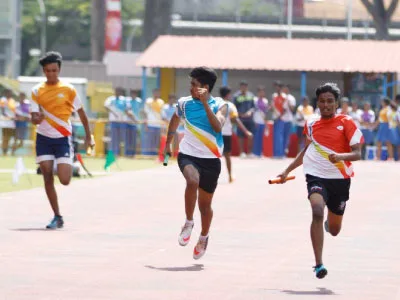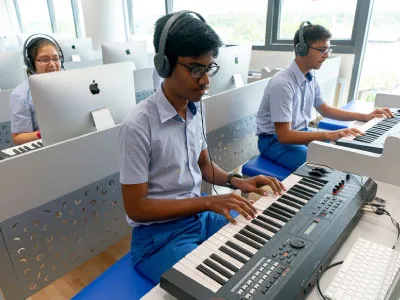Team building in school involves activities that help students work together, communicate, and trust each other. It’s about creating a positive classroom environment where students feel connected and supported. It teaches kids essential life skills like cooperation, problem-solving, and leadership.
Team building activities promote a sense of belonging and community among students, reducing conflicts and fostering empathy. They also enhance academic performance by encouraging collaboration and peer learning. It prepares students for success in both school and future endeavours.
What are the benefits of team-building activities for kids?
Team-building activities for kids offer numerous benefits that contribute to their personal and academic growth. Let’s explore some of the key benefits of these activities:
● Promotes Collaboration: Team-building activities encourage children to work together towards a common goal.
● Develops Communication Skills: Kids learn to express their ideas and listen to others effectively.
● Builds Trust and Respect: Collaborative tasks help in establishing trust and respect among peers.
● Enhances Problem-Solving Abilities: Children learn to think critically and creatively to overcome challenges.
● Boosts Self-Confidence: Successfully completing tasks as a team boosts children’s self-esteem.
● Fosters Leadership Skills: Some activities provide opportunities for kids to take on leadership roles.
● Creates a Sense of Belonging: Working together strengthens the sense of belonging and community within the classroom.
● Improves Social Skills: Kids develop better social skills by interacting with their peers in a positive environment.
● Prepares for Real-Life Situations: Skills learned through team-building activities are applicable in real-life situations, preparing kids for future challenges.
Top 7 effective team building activities for students
Incorporating team-building activities into the classroom setting is an excellent way to foster a positive learning environment and develop crucial social and cognitive skills in students. Let’s explore nine engaging and effective team-building activities that can enhance collaboration, communication, and teamwork among students studying.
1. The Name Game
This activity encourages students to learn each other’s names in a fun and interactive way. Students stand in a circle and one person starts by saying their name followed by an action. The next person repeats the first person’s name and action, then adds their own. This continues until everyone has had a turn, reinforcing name recognition and fostering a sense of community.
2. Group Juggle
Group Juggle is a cooperative game where students work together to keep multiple objects in the air simultaneously. Starting with one object, students toss it among themselves. Gradually, more objects are added, challenging students to communicate effectively, coordinate movements, and maintain focus. It promotes teamwork, hand-eye coordination, and quick decision-making skills.
3. Think-Pair-Repair
In Think-Pair-Repair, students initially think about a question or problem individually, then pair up with a partner to discuss their thoughts. After discussing, pairs come together with another pair to share ideas and refine their understanding collectively. This activity promotes active engagement, peer learning, and collaboration while enhancing comprehension and critical thinking skills.
4. Shrinking Classroom
The Shrinking Classroom activity involves gradually reducing the physical space available to students while they work collaboratively on a task. As the space diminishes, students must adapt their communication, cooperation, and problem-solving strategies to accommodate the shrinking area. This activity fosters teamwork, adaptability, and creativity under pressure.
5. Balloon Battle
In Balloon Battle, students are divided into teams and must keep balloons in the air using only their hands or designated tools. The objective is to prevent balloons from touching the ground while also trying to land balloons on the opposing team’s side. This fast-paced game enhances hand-eye coordination, teamwork, and strategic thinking in a lively and engaging way.
6. The Marshmallow Challenge
The Marshmallow Challenge tasks students with building the tallest freestanding structure using spaghetti, tape, string, and a marshmallow. Working in teams, students must collaborate, problem-solve, and innovate to construct a stable tower within a time limit. This hands-on activity fosters creativity, teamwork, and resilience as students experiment with different designs and materials.
7. Team Drawing
Team Drawing involves groups of students working together to create a single cohesive drawing or artwork. Each student contributes to the drawing, taking turns to add elements or details. This collaborative activity encourages communication, creativity, and compromise as students share ideas and work towards a common artistic goal, fostering a sense of teamwork and camaraderie.
Also Read: Reasons and Benefits of Choosing IB PYP Programme
Conclusion
Team-building activities are invaluable tools for fostering collaboration, communication, and camaraderie among students. By engaging in these activities, students develop essential social, problem-solving, and leadership skills in a fun and interactive environment. Incorporating team-building activities into the classroom promotes a positive school culture and prepares students for success in academics and beyond.
At Global Indian International School (GIIS), we recognise the importance of collaborative activities in nurturing well-rounded students. Just like team-building activities cater to diverse age groups, our classroom initiatives are tailored to suit students’ developmental levels and interests. From interactive group projects in kindergarten to leadership workshops in high school, we provide platforms for social interaction and skill development.
These collaborative endeavours not only enhance communication and teamwork but also foster creativity, problem-solving, and empathy among students. By integrating such activities into our curriculum, we ensure that every student at GIIS is ready to succeed in today’s increasingly interconnected world.


